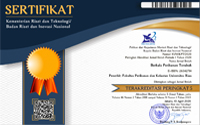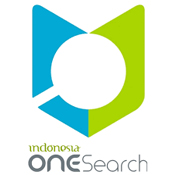ANALYSIS OF THE POTENTIAL DEVELOPMENT OF MANGROVE FOREST ECOTOURISM IN KAMPUNG SUNGAI KAYU ARA, SIAK DISTRICT, RIAU PROVINCE
Abstract
Keywords
Full Text:
PDFReferences
Ahmad. A; M. B. Saleh and T. Rusolono. 2016. Spatial modeling of deforestation in Fmu Of Poigar, North Sulawesi. Jurnal Penelitian Kehutanan Wallacea. Vol. 5. p 159.
Avau, J; M. Cunha-Lignon; B. De Myttenaere; M. F. Godart and F. Dahdouuh-Guebas. 2011. The commercial images promoting Caribbean mangroves to tourists: Case studies in Jamaica, Guadeloupe and Martinique. Journal of Coastal Research. Special Issue 64, 2011. P 1277-1281.
BAPSD Kabupaten Siak. 2020. Profil kecamatan. Pelayanan administrasi pemerintahan skretarian daerah terpadu Kab. Siak. http://paten.siakkab.go.id/ sungaiapit/ index.php?com=halutama&link=profil_kecamatan.
Basyuni, M; Y. Bimantara; M. Siagian; R. Wati; B. Slamet; N. Sulistiyono; dan R. Leidonad. 2018. Developing community-based mangrove management through eco-tourism in North Sumatra, Indonesia. In IOP Conference Series: Earth and Environmental Science (pp. 1–7). https://doi.org/10.1088/1755- 1315/ 126/1/012109.
Buwono, R. Y. 2017. Identifikasi dan kerapatan ekosistem mangrove di kawasan Teluk Pangpang Kabupaten Banyuwangi. Samakia: Jurnal Ilmu Perikanan. Vol. 8 (1): 32-37.
Fisu, A. A; A. Ahmad; A. Hidayat; dan L. U. Marzaman. 2020. Potential of mangrove ecosystem as a tourism object development in Kaledupa Island. Edutourism Journal of Tourism Research. Vol. 02:01. P 11-17.
Hakim, L; D. Siswanto and N. Makagoshi. 2017. Mangrove conservation in East Java: The Ecotourism Development Perspectives. Journal of Tropical Life Science. Vol 7(3), 277– 285.
Kariada, T. M and I. Andin. 2014. The role of mangroves as a biofilter of water pollution in the area of milkfish ponds in Semarang. Journal of Humans and the Environment. Vol. 21 (2): 188-194.
Karlina, E. 2015. Strategi pengembangan ekowisata mangrove di kawasan pantai Tanjung Bara, Kutai Timur Kalimantan Timur. Jurnal Penelitian Hutan dan Konservasi Alam. Vol. 12 (2).
Keputusan Menteri Negara Lingkungan Hidup Nomor 201 Tahun 2004 Tentang Kriteria Baku dan Pedoman Penentuan Kerusakan Mangrove. Kantor Menteri Negara LingkunganHidup Jakarta.
Mughofar A; M. Mohammad dan S. Prabang. 2018. Zonasi dan komposisi vegetasi hutan mangrove Pantai Cengkrong Desa Karanggandu Kabupaten Trenggalek Provinsi Jawa Timur. Jurnal Pengelolaan Sumberdaya Alam dan Lingkungan. 8(1):77-85.
Mulyadi, E. dan N. Fitriani. 2014. Konservasi Hutan Mangrove Sebagai Ekowisata. Jurnal Ilmiah Teknik Lingkungan, 2 (1): 11-18.
Noor Y. R; M. Khazali dan I. N. N. Suryadiputra. 1999. Panduan pengenalan mangrove di Indonesia. Bogor : Institute Pertanian Bogor.
Nugraha, B; I. S. Banuwa dan S. Widagdo. 2015. Perencanaan lanskap ekowisata hutan mangrove di pantai Sari Ringgung Desa Sidodadi Kecamatan Padang Cermin Kabupaten Pesawaran. Jurnal Sylva Lestari. Vol 3(2), 53–66.
Rangkuti, F. 2013. Teknik membedah kasus bisnis analisis SWOT cara perhitungan bobot, rating, dan OCAI. Penerbit PT. Gramedia Pustaka Utama. Jakarta.
Sadik, M; A. H Muhiddin dan U. Marzuki. 2017. Kesesuaian ekowisata mangrove ditinjau dari aspek biogeofisik kawasan pantai Gonda di Desa Laliko Kecamatan Campalagian Kabupaten Polewali Mandar. Spermonde. Vol. 2 (3). P 25-33.
Supriharyono, 2009. Konservasi ekosistem sumberdaya hayati di wilayah pesisir dan laut tropis. Pustaka Pelajar. Yogyakarta.
Triwibowo, W. 2015. Ekowisata mangrove (Studi etnografi tentang pengelolaan ekowisata mangrove berbasis masyarakat di Kampoeng Nipah, Desa Sei Nagalawan, Kecamatan Perbaungan, Serdang Bedagai). Skripsi. Medan: Universitas Sumatera Utara.
Utomo, B., S. Budiastuti, and C. Muryani. 2017. Strategy for managing mangrove forests in the Tanggul Tlare Village, Kedung District, Jepara Regency. Journal of Environmental Sciences. Vol. 15 (2): 117-123.
Yoswaty, D. dan J. Samiaji. 2013. Buku Ajar Ekowisata Bahari. UR Press, Riau. 111 hal.
Yulianda, F.2007. Ekowisata bahari sebagai alternatif pemanfaatan sumberdaya pesisir berbasis konservasi. Makalah Sains Departemen MSP. IPB, Bogor.
DOI: http://dx.doi.org/10.31258/terubuk.49.1.775-787
Refbacks
- There are currently no refbacks.
Copyright (c) 2021 Dessy Yoswaty, Irwan Effendi, Nursyirwani Nursyirwani, Joko Samiaji, Muhammad Razali

This work is licensed under a Creative Commons Attribution 4.0 International License.












